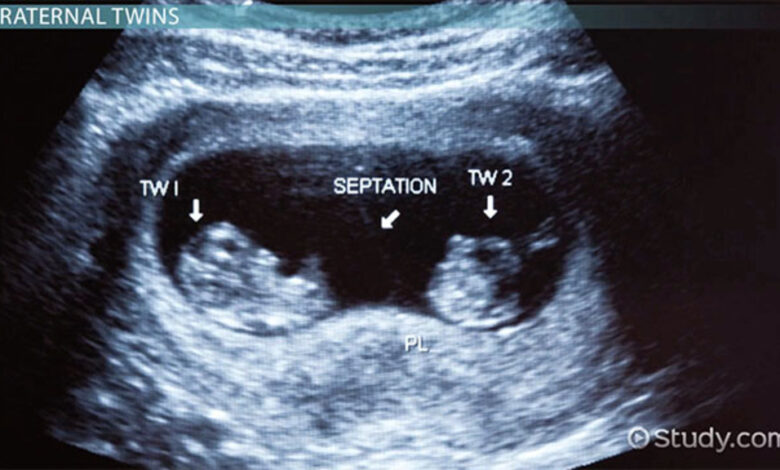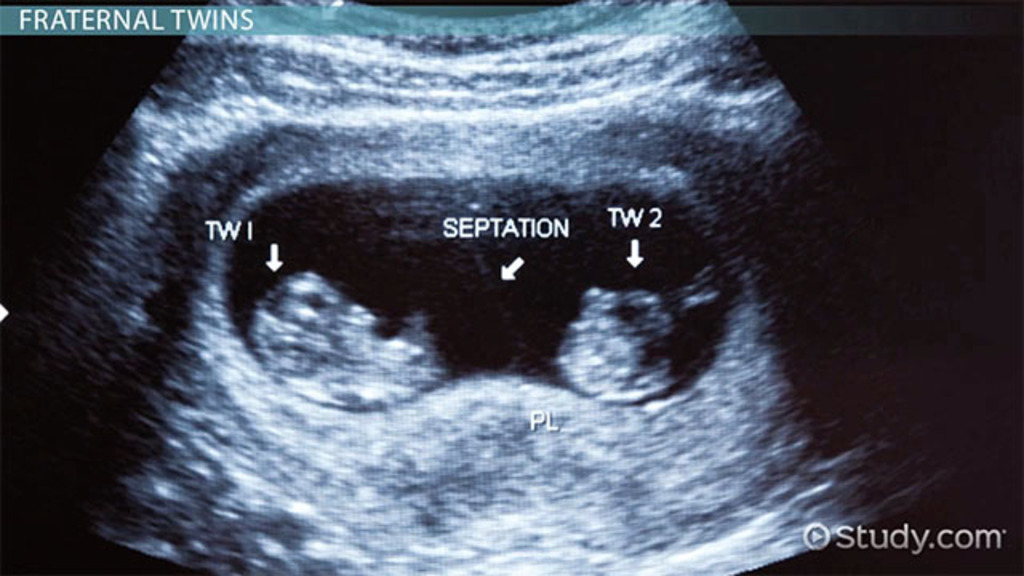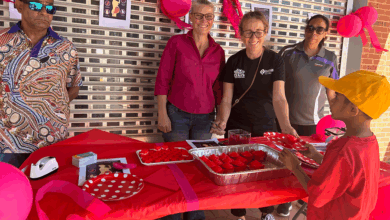
Do multiple birth siblings always turn out the same? This question delves into the fascinating interplay of genetics, environment, and individual agency in shaping the lives of twins and other multiple births. From the shared DNA that binds them to the unique experiences that carve their paths, we’ll explore how these factors contribute to the remarkable diversity—or surprising similarities—often observed among multiple birth siblings.
The exploration begins by examining the shared genetic heritage, looking at how identical twins, for example, inherit the same genetic code, yet often exhibit distinct personalities and life choices. We’ll then delve into the powerful influence of environmental factors, from socioeconomic backgrounds to parental expectations, and how these elements can diverge or converge in the lives of multiple birth siblings.
Ultimately, the answer to this question is far more nuanced than a simple ‘yes’ or ‘no.’
Exploring the Concept of Shared Ancestry

Multiple births, whether identical twins or fraternal twins, offer fascinating insights into the complex interplay of genetics and environment in shaping human development. While sharing a womb and a family, these siblings often exhibit unique characteristics, highlighting the profound influence of individual experiences and chance events. Understanding the intricacies of shared ancestry in multiple births helps unravel the mystery of individual differences despite a common origin.Identical twins arise from a single fertilized egg that splits into two embryos, sharing virtually identical genetic material.
Fraternal twins, on the other hand, result from the fertilization of two separate eggs by two separate sperm, leading to siblings with a genetic similarity comparable to other siblings born at different times. This difference in origin underlies their varied characteristics.
Genetic Inheritance Patterns in Multiple Births
Genetic inheritance in multiple births follows specific patterns. Identical twins, having the same genetic material, often display striking similarities in physical traits, predispositions to certain diseases, and even personality traits. However, environmental factors play a crucial role in shaping their individual development. Fraternal twins, possessing a similar genetic relatedness as other siblings, may show similar characteristics, but the variations are typically more pronounced.
So, do identical twins always end up the same? Not exactly! While genetics play a huge role, environment and life experiences shape who we are. Just like how a plastic face shield isn’t a great replacement for a good cloth mask, why plastic face shields aren’t a safe alternative to cloth masks , the similarities and differences between twins are a mix of nature and nurture.
Ultimately, it’s a fascinating interplay that makes each person unique, even if they share the same DNA.
Differences in gene expression, which determines how genes are used, also contribute to the distinct characteristics of each individual.
Factors Influencing the Development of Individual Characteristics in Identical Twins
Even identical twins, with their near-identical genetic makeup, exhibit unique characteristics. Factors like prenatal environmental influences, exposure to different types of experiences, and varying nutrition can lead to observable differences. Epigenetics, the study of how environmental factors affect gene expression, plays a crucial role in understanding these variations. For instance, one twin might experience a different prenatal environment, perhaps facing more stress or exposure to toxins, potentially influencing their growth and development in subtle ways.
Shared Prenatal Environments and Their Effects
Shared prenatal environments, while important for the development of multiple births, do not fully determine their outcomes. The unique position within the uterus, exposure to different nutrients, and the presence of other complications can create variations in development. For example, if one twin receives more blood flow than the other, it might lead to differences in growth or development, even in identical twins.
These subtle variations, while sometimes not readily apparent, significantly contribute to their individual paths.
Comparison of Genetic Makeup
| Characteristic | Identical Twins | Fraternal Twins |
|---|---|---|
| Genetic Material | Virtually identical; same DNA | Similar to other siblings; 50% shared DNA |
| Origin | Single fertilized egg that splits | Two separate fertilized eggs |
| Physical Traits | Often very similar, but subtle differences can exist | More likely to show greater variability in physical traits |
| Disease Predisposition | Often share similar risks for certain diseases | Individual risks can vary depending on specific genes inherited |
Note: The table above illustrates a general comparison. There can be variations depending on specific cases.
Analyzing Environmental Influences: Do Multiple Birth Siblings Always Turn Out The Same
The environment plays a significant role in shaping who we are, and this is particularly true for multiple birth siblings. While shared genes undoubtedly influence their development, environmental factors can significantly impact their life trajectories, leading to distinct personalities and experiences even within the same family unit. These factors are complex and multifaceted, often interacting in intricate ways to sculpt the individuals they become.Beyond the genetic blueprint, a myriad of environmental influences contribute to the uniqueness of each sibling.
Socioeconomic status, parental expectations, cultural norms, and even the subtle differences in how parents interact with each child all contribute to the development of distinct identities. Understanding these environmental factors is crucial for appreciating the diversity of experiences within multiple birth families.
Socioeconomic Factors, Do multiple birth siblings always turn out the same
Socioeconomic status can have a profound impact on the life trajectories of multiple birth siblings. Families facing financial hardship may experience increased stress, leading to potential behavioral differences in the children. Limited access to resources, such as quality education or healthcare, can create disparities in opportunities and life outcomes. Conversely, families with greater economic stability may provide more opportunities for their children, leading to a more equitable development.
For example, access to extracurricular activities, travel, and advanced education can significantly influence a child’s development and future prospects.
Parental Expectations
Parental expectations can significantly influence the lives of multiple birth siblings. While parents may have similar expectations for all children, subtle differences in how they interact with each sibling, based on perceived strengths or weaknesses, can shape their development. One sibling might be pushed towards academic excellence while another is encouraged in artistic pursuits. These seemingly minor differences can lead to varied aspirations and life choices.
Consider a scenario where one set of twins is expected to excel in mathematics, while the other is expected to be more creative. Over time, these differing expectations could influence their career paths and overall life experiences.
Cultural Norms and Societal Expectations
Cultural norms and societal expectations can also affect the experiences of multiple births. In some cultures, multiple births may be viewed with reverence or as a source of pride. In others, they might face societal pressures or judgments. The way society views multiple births can shape the expectations and experiences of the siblings throughout their lives. For instance, societal pressure to conform to gender roles can impact how parents raise their twins, potentially influencing the children’s future aspirations.
While twins and other multiple births might share a similar upbringing, they definitely don’t always turn out the same. It’s fascinating how individual personalities emerge, even in those born at the same time. Recent CDC guidance on returning to work, like the advice found in cdc gives advice on how to go back to work what the experts say , highlights the importance of individual needs and adjustments.
Ultimately, each person’s unique journey shapes their path, even for those born closely together.
Parenting Styles
Parenting styles can significantly impact how multiple birth siblings develop. Different approaches to discipline, nurturing, and encouragement can lead to varied outcomes. This table illustrates how different parenting styles might influence the development of multiple birth siblings:
| Parenting Style | Potential Impact on Multiple Birth Siblings |
|---|---|
| Authoritative | Foster independence, encourage self-expression, and provide structure, potentially leading to balanced development in both siblings. |
| Authoritarian | Can lead to differing levels of independence and self-esteem, potentially creating conflict between siblings. One sibling might feel pressured to conform, while the other might rebel. |
| Permissive | Might lead to varying levels of self-regulation and responsibility, creating different coping mechanisms in the siblings. One might be more assertive, while the other might exhibit dependence. |
| Uninvolved | Could lead to varying levels of emotional security and support, potentially impacting their self-esteem and resilience differently. |
Examining Individual Differences
While shared genetics play a significant role in the development of multiple birth siblings, their individual journeys often diverge in surprising ways. This divergence stems from a complex interplay of factors, including unique life experiences, personal choices, and the development of individual identities. Ultimately, the narrative of multiple birth siblings highlights the remarkable plasticity of the human spirit and the profound impact of environmental influences.The concept of shared ancestry, while powerful, doesn’t dictate a predetermined destiny.
Individual differences emerge through a multifaceted process where the blueprint of genetics interacts with the tapestry of lived experiences. This exploration delves into the diverse paths taken by multiple birth siblings, illustrating how individuality blossoms amidst shared origins.
Examples of Divergent Paths
Multiple birth siblings, often raised in similar environments, frequently exhibit distinct personalities and career choices. Consider the case of identical twins separated at birth. While their genetic makeup is virtually identical, their upbringing and life experiences can dramatically alter their paths. One twin might pursue a career in the arts, while the other focuses on a scientific field.
These differences highlight the influence of environment and personal choices in shaping a unique identity.
Case Studies of Divergent Life Courses
Numerous case studies demonstrate the divergence in life courses of multiple birth siblings. A well-known example is the case of the identical twins, Jim Lewis and Jim Springer, who were separated at birth and raised in different environments. Despite sharing a near-identical genetic makeup, their life experiences led them to have surprisingly different personalities, career choices, and even marital patterns.
Another fascinating case involves the diverging paths of fraternal twins, where their different genetic predispositions coupled with varying environments lead to unique traits and aspirations.
The Role of Individual Agency
The choices individuals make significantly influence their life trajectories. Twins, despite sharing a common origin, make independent decisions that shape their individual destinies. A twin might choose a different educational path, opting for a specialized field, which would ultimately lead to a career in a unique industry. These choices, though influenced by various factors, reflect a powerful sense of individual agency in shaping one’s life.
Influence of Life Experiences
Life experiences play a critical role in shaping individual identities. A twin might face a significant challenge or opportunity that the other doesn’t, such as a challenging childhood experience, a major life event, or a particular mentorship. These experiences can profoundly impact personality development and life choices, resulting in distinct identities despite a shared genetic history.
Factors Contributing to Uniqueness
| Factor | Description |
|---|---|
| Genetics | While influential, genetic predispositions are not deterministic. |
| Early Childhood Experiences | Early childhood environments significantly shape personality development. |
| Socialization | Interactions with family, friends, and society influence perspectives. |
| Educational Choices | Educational pursuits and specializations lead to distinct career paths. |
| Life Events | Significant life events can alter perspectives and aspirations. |
| Personal Choices | Individual choices concerning relationships, career, and lifestyle. |
Considering Developmental Milestones

Twins, triplets, and other multiple births often share a unique developmental journey. While their shared ancestry and prenatal environment contribute to similarities, individual differences and environmental factors significantly shape their developmental trajectories. Understanding the typical milestones and potential variations is crucial for supporting their growth and well-being. This exploration delves into the nuances of developmental milestones in multiple birth siblings, examining the impact of birth order and the crucial role of the environment.
Typical Developmental Milestones for Multiple Birth Siblings
Developmental milestones are the skills and abilities children typically acquire at certain ages. These milestones encompass various domains, including physical, cognitive, social, and emotional development. For multiple birth siblings, these milestones generally follow the same patterns as for single births, though there can be notable variations. Factors like birth order, prenatal conditions, and postnatal experiences play significant roles.
Variations in Developmental Milestones
Individual differences in developmental milestones are inherent to all children. In multiple births, these variations can be more pronounced due to the complex interplay of shared and unique experiences. While twins might achieve similar milestones around the same time, subtle differences in their rate of progress can exist. These differences are often influenced by a variety of factors, including differences in temperament, interaction styles, and opportunities for stimulation.
Impact of Birth Order on Developmental Trajectory
Birth order, though not as significant as individual characteristics in multiple births, can still play a part. For example, the firstborn twin may receive more attention in the early stages, which could influence their development. Conversely, later-born twins may develop coping mechanisms to navigate the attention dynamic. The environment plays a key role in shaping these subtle differences.
Impact of Developmental Environment
The environment significantly influences the achievement of developmental milestones. Factors like parental support, quality of care, and access to resources all contribute to the developmental trajectory of multiple birth siblings. For example, a nurturing environment can foster the development of strong social-emotional skills in both children, while limited resources could impede their progress.
Table of Typical Milestones for Multiple Birth Siblings
| Age Range | Physical Milestones | Cognitive Milestones | Social-Emotional Milestones |
|---|---|---|---|
| 0-3 Months | Lifts head, follows objects with eyes, grasps objects | Recognizes familiar faces, responds to sounds | Reacts to touch and sound, smiles |
| 4-6 Months | Rolls over, sits with support, reaches for objects | Begins to babble, responds to simple instructions | Engages in social interactions, shows affection |
| 7-9 Months | Crawls, pulls to stand, cruises | Understands simple words, imitates sounds | Shows preference for familiar people, exhibits stranger anxiety |
| 10-12 Months | Walks independently, manipulates objects with hands | Follows simple directions, understands basic concepts | Develops a sense of self, plays with other children |
Highlighting Shared Experiences
Multiple birth siblings, whether twins, triplets, or more, often share a unique tapestry of experiences that profoundly shape their bond and their perspectives on life. From the early days of shared gestation to the later years of shared memories, these experiences forge a special connection that sets them apart. This shared journey influences their development, fostering a deep understanding and empathy for each other.Shared experiences are not merely coincidental occurrences; they are the building blocks of a unique sibling dynamic.
It’s fascinating how similar twins can be, but do they always turn out the same? While shared genetics play a huge role, environmental factors, like exposure to chemicals like phthalates, found in surprising places like mac and cheese (check out what are phthalates and why are they in mac and cheese ), can influence their development. Ultimately, the path each individual takes is unique, even for identical twins.
These experiences, whether positive or challenging, create a shared history that strengthens their bond, shaping their perceptions and contributing to their individual growth. The influence of shared experiences is undeniable, creating a unique perspective on the world for multiple birth siblings.
Shared Experiences in Early Life
The early years of life for multiple birth siblings are often marked by a high degree of shared experiences. This period is crucial in shaping their perceptions and creating lasting bonds. From shared prenatal environments to the initial stages of infancy, their lives intertwine in profound ways. These shared experiences lay the groundwork for the unique dynamics of their relationship.
- Shared Prenatal Environment: Twins and other multiple births share the same womb, a unique experience that can lead to a heightened sense of interconnectedness and empathy from an early age. The shared space and experiences in utero contribute to a profound sense of belonging and a shared history.
- Early Developmental Milestones: Whether learning to crawl, walk, or talk, multiple birth siblings often achieve these milestones together. This shared experience can create a sense of camaraderie and mutual support, fostering a deep understanding of each other’s progress and challenges.
- Shared Parental Attention: The attention multiple birth parents devote to their children can also be shared, influencing the way siblings perceive their relationship with each other and their parents. This can create a unique dynamic where they learn to navigate the world together.
Shared Experiences in Childhood and Adolescence
As multiple birth siblings navigate childhood and adolescence, shared experiences continue to shape their relationship and their perception of the world. The shared experiences influence their development and create lasting memories.
- Shared Play and Activities: Multiple birth siblings often participate in activities together, from playing games to attending school. These shared experiences strengthen their bond and create lasting memories.
- Shared Challenges and Triumphs: Multiple birth siblings may face similar challenges, whether academic pressures or social anxieties. Overcoming these challenges together can strengthen their bond and create a sense of resilience.
- Shared Social Experiences: Experiences like attending school or participating in extracurricular activities can create lasting memories and strengthen the bond between siblings. The support system created by shared social experiences can contribute to a greater sense of self-worth and belonging.
Examples of Strong Sibling Bonds
Numerous accounts highlight the strong bonds between multiple birth siblings. The shared experiences and support systems contribute to a unique and enduring sibling relationship.
- Many pairs of twins are known for their close bond, often exhibiting a deep understanding and empathy for each other. Their shared experiences, from the womb to adulthood, create a unique connection.
- The famous siblings, the Olsen twins, provide a compelling example of how shared experiences can foster a deep and lasting bond. Their childhood and early adulthood were intertwined, and their shared memories and experiences continue to shape their relationship.
Summary Table of Shared Experiences
| Category | Description |
|---|---|
| Prenatal | Shared womb environment, influencing a sense of interconnectedness. |
| Early Childhood | Shared milestones, parental attention, and play activities. |
| Childhood/Adolescence | Shared challenges, triumphs, and social experiences. |
Illustrating Diverse Outcomes
While shared genetics and early experiences often shape the lives of multiple birth siblings, their individual journeys diverge significantly. The interplay of inherent predispositions, environmental factors, and personal choices results in a wide spectrum of life outcomes. Understanding these diverse paths offers valuable insights into the complexity of human development and the resilience of the human spirit.
Diverse Life Outcomes
Multiple birth siblings, despite their shared beginnings, frequently navigate distinct life trajectories. This divergence stems from a confluence of influences, including unique personality traits, varying levels of parental attention, and distinct opportunities encountered throughout their lives. Factors like the perceived differences in physical characteristics or temperament among the siblings, coupled with specific interactions with family and friends, contribute to a diverse range of experiences.
Educational Backgrounds
The educational pursuits of multiple birth siblings can vary considerably. Differences in learning styles, motivation, and exposure to educational resources contribute to these variations. For instance, one sibling might excel in academic pursuits, driven by a passion for learning and supported by a strong family environment. Meanwhile, another sibling might find fulfillment in vocational training, driven by a practical bent and a desire for immediate application of knowledge.
These varied choices demonstrate the impact of personal preferences and the unique opportunities encountered.
Examples of Diverse Educational Paths
Consider the case of twins, Sarah and Emily. Sarah, the older twin, showed a strong interest in literature from a young age. Her passion fueled her academic endeavors, leading her to pursue a degree in English Literature. Emily, on the other hand, was more drawn to hands-on activities and excelled in science. Her interests culminated in a career in engineering.
Their different academic trajectories underscore the multifaceted nature of individual learning styles and the diverse avenues available for pursuing education.
Varied Career Paths
Multiple birth siblings often choose diverse career paths, reflecting their individual interests, skills, and aspirations. A sibling drawn to the arts might pursue a career in graphic design, while another with a penchant for technology might opt for a career in software development. The different career paths reflect the spectrum of interests and talents present within the sibling dynamic.
Table Illustrating Diverse Life Outcomes
| Sibling | Educational Background | Career Path | Motivational Factors |
|---|---|---|---|
| Amelia | Bachelor of Arts in History | Museum Curator | Passion for historical artifacts and preservation |
| Olivia | Master of Science in Biology | Research Scientist | Interest in scientific discoveries and experimentation |
| Ethan | Vocational Training in Carpentry | Independent Contractor | Practical skills and hands-on experience |
| Noah | Bachelor of Science in Engineering | Software Engineer | Interest in technology and problem-solving |
Summary
In conclusion, the answer to whether multiple birth siblings always turn out the same is a resounding no. While shared ancestry and experiences undoubtedly play significant roles, the diverse range of environmental factors, individual choices, and life events ultimately sculpt the unique trajectories of each sibling. This complex interplay highlights the multifaceted nature of human development and the importance of recognizing the individuality within shared beginnings.





